Explore National Park In Tanzania
There are 22 Tanzania National Parks, covering about 15% of the country’s land. Managed by the Tanzania National Park Authority (TANAPA), these parks protect breathtaking landscapes and incredible wildlife. From vast savannas to misty mountains, each place has its character. The game viewing here is among the finest in Africa, with scenes straight out of a wildlife documentary.
African Scenic Safaris arranges Tanzania Safari Packages packed with adventure and cultural encounters. This post dives into top Tanzania National Parks and the experiences that make them special.
Types Of Wildlife Protection Areas In Tanzania
In Tanzania, wildlife protection zones are divided into four categories. These include national parks, game reserves, conservation areas, and wildlife management areas.
While these areas share some similarities, they are distinct in terms of their management objectives, regulations, and permitted activities. Here are some of the key differences between National Parks in Tanzania, game reserves, and conservation areas:
National Parks
These protected areas are carefully managed to preserve rich biodiversity while providing visitors with experiences immersed in nature. The national parks of Tanzania:
- Are Managed primarily for wildlife conservation and tourism
- Are Large, protected areas, home to diverse flora and fauna
- Are regulated on visitor activities, usually limited to game drives and guided walks on Tanzania Wildlife Safari
Game Reserves
These are protected areas where wildlife conservation and recreational hunting harmoniously coexist. With fewer restrictions compared to national parks, you can immerse yourself in the wonders of these reserves, witnessing firsthand the tricky balance between preservation and sustainable hunting practices. Some game reserves found in Tanzania are:
- Moyowosi Game Reserve
- Grumeti Game Reserve
- Kigosi Game Reserve
- Maswa Game Reserve
Remember that, African Scenic Safaris is dedicated to responsible tourism and ethical wildlife experiences. We do not promote or include hunting in any of our Tanzania Safari Packages. Our focus remains on conservation-driven safaris that support wildlife protection and local communities.
Conservation Areas
The conservation areas in Tanzania are managed primarily for natural resource management, including conservation and sustainable development.
- Local communities are often allowed to use resources within the area in a sustainable manner.
- These areas may have fewer restrictions on visitor activities than national parks.
Ngorongoro Conservation area
Wildlife Management Areas
Wildlife Management Areas (WMAs) in Tanzania are community-based conservation areas where wildlife and other natural resources are managed by local communities. These areas are essential in promoting wildlife conservation, sustainable land use, and community development in Tanzania.
- There are currently 26 WMAs in Tanzania, covering a total area of over 10,500 square kilometres.
- The WMAs are spread across the country, with the majority located in northern Tanzania, near the Serengeti ecosystem.
- Each WMA is managed by a locally elected committee responsible for managing and regulating the use of natural resources within the area.
The committee works closely with TANAPA and other conservation organizations. Furthermore, they ensure that wildlife and other natural resources are conserved while promoting sustainable land use practices.
Details on Tanzania National Park
The following section provides essential information about accessing Tanzania’s national parks. It focuses on two important aspects: the geographical scope of the Tanzania National Parks Area and the details of Tanzania National Park Entrance Fees.
Additionally, it offers comprehensive insights into the fee structures, ensuring visitors are well-prepared for their exploration of Tanzania’s remarkable national parks.
Tanzania National Parks Area
Tanzania has dedicated over 42,000 sq. km. to its national parks and they cover more than 15% of the country’s total land. Thus, the area of these parks is of particular significance as it encompasses some of the country’s most stunningly diverse landscapes. Below we’ll highlight the areas of different Tanzania Safari Parks:
Tanzania National Parks area
Tanzania National Park Entrance Fees
Below are the updated Tanzania National Park Entrance Fees for the 2025/2026 season. These rates do not include the 18% VAT. Please note that fees may change at any time based on government regulations. For the latest updates, visit the official website: Tanzania National Parks.
Entrance Fees (High & Low Seasons)
| National Parks |
High Season (16 May - 14 March) - USD |
Low Season (15 March - 15 May) - USD |
| Serengeti & Nyerere |
$70 (Adult) / $20 (Children 5-15 yrs) |
$60 (Adult) / $20 (Children 5-15 yrs) |
| Lake Manyara, Tarangire & Arusha |
$50 (Adult) / $15 (Children 5-15 yrs) |
$45 (Adult) / $15 (Children 5-15 yrs) |
| Kilimanjaro |
$70 (Adult) / $20 (Children 5-15 yrs) |
No low season rates |
| Katavi, Mikumi, Ruaha, Rubondo, Saadani, Kitulo, Mkomazi, Udzungwa, Burigi-Chato, Ibanda-Kyerwa, Rumanyika-Karagwe, Saanane |
$30 (Adult) / $10 (Children 5-15 yrs) |
No low season rates |
| Gombe |
$100 (Adult) / $20 (Children 5-15 yrs) |
No low season rates |
| Mahale Mountains |
$80 (Adult) / $20 (Children 5-15 yrs) |
No low season rates |
These fees apply to park entry only. Additional charges may apply for Tanzania Safari Activities such as hiking, trekking, or guided tours. Always check the official website for the most up-to-date information before planning your visit.
Tanzania National Parks Concession Fees (2025/2026)
Visitors staying in tented camps within Tanzania’s national parks are required to pay an additional Concession Fee. This fee is charged per night and varies depending on the park. Similar to entrance fees, concession fees also differ based on the season.
Concession Fees (High & Low Seasons)
| National Parks |
High Season (July - September) - USD |
Low Season (October - June) - USD |
| Serengeti & Nyerere |
$60 (Adult) / $10 (Children 5-15 yrs) |
$50 (Adult) / $10 (Children 5-15 yrs) |
| Lake Manyara, Tarangire, Arusha & Kilimanjaro |
$40 (Adult) / $10 (Children 5-15 yrs)
|
No low season rates
|
|
Mahale Mountains, Ruaha, Katavi, Gombe, Burigi-Chato, Ibanda-Kyerwa, Rumanyika-Karagwe, Rubondo Island & Saanane Island
|
$30 (Adult) / $10 (Children 5-15 yrs)
|
No low season rates
|
|
Mkomazi, Saadani, Mikumi, Udzungwa, Kitulo & Other Parks
|
$25 (Adult) / $10 (Children 5-15 yrs)
|
No low season rates
|
These fees apply only to guests staying in tented camps inside the parks. Additional charges for activities or accommodations may apply. Visitors are advised to check the latest rates on the official Tanzania National Parks website before making reservations.
Additional Fees to Consider for Tanzania National Parks
When planning a Safari in Tanzania, there are a few extra costs beyond the standard park entrance fees. These charges vary depending on the park and specific activities. Here are some key fees to keep in mind:
- Ngorongoro Crater Descent Fee – If you plan to do a game drive inside the Ngorongoro Crater, there is an additional charge of $250 + VAT (approximately $295 per vehicle). This fee is per car, not per person, regardless of the number of passengers.
- Daily Vehicle Fee – Every vehicle entering a national park must pay a daily fee ranging from $10 to $15, depending on the park.
- Ngorongoro Conservation Area Transit Fee – To enter the Serengeti, visitors must first pass through the Ngorongoro Conservation Area. Even if you are only transiting and not doing a crater game drive, you must pay the Ngorongoro Conservation Area fee in addition to the Serengeti entrance fee, effectively doubling the cost per person for that day.
It’s important to factor in these costs when budgeting for your safari. Checking with your Tanzania Tour Operator or referring to official park websites will help ensure you have the latest fee details.
How to Pay Tanzania National Park Fees
For travellers booking with a tour operator, park fees are usually included in the Tanzania Safari Package, so there is no need to handle payments separately. However, if you are paying the fees yourself, there are a few important things to keep in mind:
- Cash Payments – Most national parks do not accept cash. Those that do will only take Tanzanian Shillings (TZS) or US Dollars (USD). Note that USD bills must be issued after 2010 and in good condition (no tears or damage).
- Credit Card Payments – Park fees can be paid with credit cards, but debit cards are not accepted.
To avoid payment issues, it’s best to confirm accepted payment methods with your tour operator or the park authorities in advance.
Note: If you book a Tanzania Travel Package with us, we’ll handle all park fee payments on your behalf, ensuring a smooth experience.
Visit Top Tanzania National Parks
In this section, we’re going to shine a spotlight on the Best National Parks in Tanzania. These protected spaces are a theatre of wildlife action and up-close sightings. We at African Scenic Safaris have conducted tons of safaris in these national parks, thus guaranteeing an experience that is tried, tested, and above all unmatched! Let’s look at them one by one so you can choose the right one for yourself.
Northern Tanzania National Parks
The Northern Circuit boasts some of the Best Safari Parks in Tanzania, including Serengeti National Park, Ngorongoro Conservation Area, Tarangire National Park, Lake Manyara National Park, and Arusha National Park.
At African Scenic Safaris, most of our travellers choose to explore this region, making it the focal point of over 70% of our safari experiences. Its diverse landscapes, abundant wildlife, and world-renowned parks make it a top choice for safari enthusiasts.
Below is a detailed look at each national park in this iconic safari destination.
1. Serengeti National Park – The Glory of Tanzania
Serengeti National Park is the crown jewel of Tanzania, offering one of the most spectacular wildlife experiences on Earth. If you've ever imagined an African safari, chances are you've dreamed of the Serengeti. Located in northern Tanzania, it stretches across the Simiyu and Mara regions, making it the Biggest National Park in Tanzania and a must-visit destination for nature lovers.
- Area : 14,763 sq. km. (5,700 sq. miles)
- Established in : 1951
- Designated as a UNESCO World Heritage Site in : 1981
- Coordinates : 2.3333° S, 34.8333° E
- Opening Hours : 6 am to 6 pm (open every day)
- Entrance Fees : For Adults: $70. For Children (between the ages of 5 to 15): $20.
The landscape of the Serengeti is famous for its endless grasslands in the southeast. The northern area is composed of mountains and rocky regions. In the western area, you can discover lush forests and rivers. It’s an enormous landscape that’s stunning to experience on a Safari in Tanzania.
Tanzania National Parks protect 22 amazing places where animals roam free, nature stays wild, and local communities help keep it that way. It’s all about saving nature and enjoying it too.
Highlights of the Serengeti
- Home to the Great Wildebeest Migration
- Comprehensive wildlife viewing opportunities
- Hot Air Balloon Rides over the Savannahs
- Best to see lions as well as other predators
- Excellent range of safari accommodations
Best Time to Visit Serengeti National Park
The Best Time to Visit Tanzania for a Serengeti safari depends on what you want to experience. While wildlife viewing is excellent year-round, the Great Migration is the park’s biggest highlight. From January to October, millions of wildebeest move across the plains, attracting predators. However, their movement follows rainfall patterns, making exact timings unpredictable.
For the wildebeest calving season, visit Ndutu from January to February, when thousands of calves are born, drawing predators. June to July is perfect for spotting herds in the Western Corridor, while August to September offers thrilling Mara River crossings in the north. If you prefer a less crowded safari, explore other parts of the Serengeti, where abundant wildlife can be seen year-round.
Accommodations At the Serengeti
The following are some of our recommendations for accommodations in Serengeti National Park:
Most travellers prefer the luxury of the Four Seasons Safari Lodge in Serengeti. The lodge provides game drives and hot-air balloon safaris. The prices start from $1000 onwards.
Serengeti Safari Cost (Starts From $70 To $650)
The entry fee for Serengeti National Park starts from $70 (plus 18% VAT). In this way:
- A 2-Day Serengeti Safari Cost starts from $750 (per person, per day) with budget accommodations. And, $1350 (per person, per day for luxury accommodations).
- A 3-Day Serengeti Safari Coststarts from $1250 (per person, per day) with budget lodges and campsites. And, $1650 (per person, per day) for luxury lodges and tented camps.
2. Tarangire National Park – The Elephant Kingdom
Tarangire National Park, part of the Northern Tanzania Safari Circuit, is a hidden gem known for its vast landscapes and rich wildlife. The Tarangire River, the park’s lifeline, attracts large herds of elephants and other animals, especially in the dry season, when water sources elsewhere disappear, creating one of Tanzania’s most spectacular wildlife gatherings.
- Area : 2,850 sq. km. (1,100 sq. miles)
- Established in : 1970
- Coordinates : 4.0057° S, 35.9788° E
- Opening Hours : 6 am to 6 pm (open every day)
- Famous For : Large elephant herds & Iconic Baobab Trees
- Activities : Guided Walking Safaris, Day Game Drives, Birdwatching
Areas of the Tarangire National Park are covered with mixed woodlands and acacia shrubs. Most remarkable are the towering baobab trees. The southern and eastern regions of the park have a big network of marshlands.
Highlights of Tarangire
- Guided walking safaris and night game drives
- Variety of accommodation options
- Concentrated wildlife viewing chances during the dry season
- Stunning landscapes dotted with ancient baobabs and towering acacias
Best Time to Visit Tarangire National Park
The best time to visit Tarangire National Park is from July to November, during the Dry Season. This period offers incredible wildlife viewing as animals gather around the Tarangire River, the park’s main water source.
During the Wet Season (November to May), many animals migrate out of the park, making wildlife spotting less frequent. However, the lush greenery and vibrant birdlife during this time can appeal to nature enthusiasts seeking a quieter experience. Plan your visit during the Dry Season to enjoy Tarangire’s wildlife at its peak!
Accommodations In Tarangire National Park
The following are the top accommodations around Tarangire National Park that offer top-notch facilities:
Acacia Tarangire Luxury Camp is also popular among travellers. It provides an exclusive and private experience. The price of Acacia Camp starts from $260 onwards.
Tarangire Safari Cost (Starts From $50 To $600)
The entrance fee for Tarangire National Park during the high season is $50. And, $45 in the low season (per person). So, including vehicle costs, the average cost of a Tarangire Safari will be:
- 1-Day Tarangire National Park Safari – From $200 (per person)
- 2-Day Tarangire National Park Safari – From $400 (per person, per day)
- 3-Day Tarangire National Park Safari – From $600 (per person, per day)
3. Ngorongoro Conservation Area – A Biodiversity Conservation Capital!
The Ngorongoro Conservation Area is a breathtaking destination in Tanzania’s northern highlands and part of the Serengeti ecosystem. It features vast grasslands, acacia woodlands, and rolling crater highlands. At its heart lies the Ngorongoro Crater, the world's largest intact caldera, teeming with wildlife. The Maasai people also call this region home, coexisting with nature uniquely and harmoniously.
- Area : 8,292 sq. km. (3,202 square miles)
- Established in : 1959
- Designated as a UNESCO World Heritage site in : 1979
- Coordinates : 3.2279° S, 35.5075° E
- Opening Hours : 6 am to 6 pm (open every day)
Set against the backdrop of an ancient volcanic caldera, the Ngorongoro Conservation Area is a great place to witness a spectacular Big Five Safari. With diverse habitats, it provides incredible wildlife encounters on a Ngorongoro Safari. The breathtaking scenery and thriving predator population make it a must-visit, where spotting the Big Five in just one day is entirely possible.
Highlights of Ngorongoro
- Year-round wildlife viewing
- Best places to see the black rhinoceros
- Cultural tours to nearby Maasai villages
- Reliable Big Five sightings
- Comfortable & luxurious accommodations
Ngorongoro Conservation Area
Best Time to Visit Ngorongoro Conservation Area
The Ngorongoro Conservation Area offers incredible wildlife viewing all year round. However, the Best Time to Visit Tanzania for a safari here depends on your preferences. From June to October (Dry Season), shorter grass makes spotting wildlife easier. The Wet Season (November to May) brings lush, green landscapes, creating a stunning backdrop for game drives.
An Insight – For a top-notch safari experience, you should consider combining your trip to Ngorongoro with a Serengeti Safari.
Accommodations in the Ngorongoro Conservation Area
Below are a few recommendations for accommodations in Ngorongoro Conservation Area:
Ngorongoro Conservation Area Accomodation
Note – The above prices are an approximation. And, they’re subject to change. So, make sure to contact our safari experts for the exact costs.
Ngorongoro Safari Cost (From $70 to $600)
The entrance fee for Ngorongoro Conservation Area in the high season is $70. And, $60 in the low season. For example, the average prices for Ngorongoro Crater (including vehicle costs) are:
- 1-Day Ngorongoro Safari – From $280 (per person)
- 2-Day Ngorongoro Safari – From $395 (per person, per day)
- 3-Day Ngorongoro Safari – From $600 (per person, per day)
4. Lake Manyara National Park - Wildlife Wonders by the Lake
Lake Manyara National Park is a scenic gem in northern Tanzania, nestled between the Great Rift Valley and Lake Manyara. Spanning the Manyara and Arusha regions, it’s a perfect stop on the Northern Safari Circuit. Its proximity to Ngorongoro and Tarangire makes it an excellent addition to any Tanzania safari, offering diverse wildlife and breathtaking landscapes.
- Area : 325 sq. km. (125 sq. miles)
- Established in : 1960
- Coordinates : 3.4459° S, 35.8093° E
- Opening Hours : 6 am to 6 pm (open every day)
- Location : Northern Tanzania, between Tarangire and Ngorongoro
- Main Attraction : Tree-climbing lions and Lake Manyara’s flamingos
Even though the park is fairly small, it still offers a wonderful Safari In Tanzania experience. It also has many distinct ecosystems (like dense forests and open savannah grasslands) and is one of the largest concentrations of mammals in Africa.
Highlights of Lake Manyara
- Great destination for walking & night safaris
- Fantastic birdwatching possibilities
- Witness tree-climbing lions atop acacia trees
- Unbelievably vast stretches of scenic surroundings
Lake Manyara National Park
Best Time to Visit Lake Manyara National Park
Lake Manyara National Park offers great wildlife viewing year-round, but the Best Time to Visit Tanzania for safaris here is from June to October during the Dry Season. Animals gather around water sources, making them easier to spot. The Wet Season (November to May) transforms the park into a lush paradise with cascading waterfalls and vibrant landscapes. However, March and April experience heavy rains, which may affect accessibility.
Our Opinions – Pack a few warm clothing items if you visit during the dry season. Because it gets cold in the early mornings. March to May marks the peak of the wet season, so pack weather-sealed lenses and a raincoat/poncho. Because you should enjoy your safari to the fullest regardless of the weather.
Accommodations In Lake Manyara National Park
The following are some accommodations that we recommend for your safari in Lake Manyara National Park:
Lake Manyara National Park Accomodation
Lake Manyara Safari Cost (Starts From $50 To $620)
The entrance fee for Lake Manyara National Park is $50 (in the high season). And, $45 (in the low season). Thus, by including vehicle costs, the average Lake Manyara Safari Cost will be:
- 1-Day Lake Manyara National Park Safari – From $200 (per person)
- 2-Day Lake Manyara National Park Safari – From $450 (per person, per day)
- 3-Day Lake Manyara National Park Safari – From $620 (per person, per day)
5. Arusha National Park – The Geneva of Africa!
Arusha National Park, located in northern Tanzania near the town of Arusha, may be small, but it holds incredible Tanzania wildlife diversity. The park’s landscapes range from the towering Mount Meru to the scenic Ngurdoto Crater and the lush montane forests. This hidden gem is perfect for those seeking a mix of adventure, wildlife, and breathtaking scenery.
- Area : 137 sq. km. (53 sq. miles)
- Established in : 1960
- Coordinates : 3.2500° S, 36.7500° E
- Opening Hours : 6 am to 6 pm
- Location : Northern Tanzania, just 35 km (22 miles) from Arusha town
- Main Attraction : Mount Meru, the second-highest mountain in Tanzania
While Arusha National Park may not have the vast wildlife populations of other National Parks in Tanzania, it offers something unique. Its breathtaking landscapes, thrilling hiking trails on Mount Meru, and diverse outdoor activities make it an incredible destination for nature lovers and adventure seekers alike.
Highlights of Arusha
- Guided Nature Walks
- Canoeing Safaris
- Day trips to the Momella Lakes
- Cultural excursions to the bomas of the Maasai communities
- Nature Walks in Lake Duluti
Best Time to Visit Arusha National Park
The best time to visit Arusha National Park is during the dry seasons from June to September and December to March. These months offer the best conditions for wildlife spotting, hiking, and outdoor activities. If you're planning a Tanzania safari, this period also aligns with The Great Migration in the Serengeti, making it a perfect addition to your itinerary.
Arusha National Park Safari Cost (Starts From $50 To $230)
Arusha National Park has an entrance fee of $50 (during the high season). And, $45 (during the low season). Below is the day-wise average safari cost in Arusha National Park:
- 1-Day Arusha Safari - $185 (per person)
- 4-Day Horse-riding Safari in Arusha – $4000 (per person per day)
- 1-Day Cycling Tour to Arusha National Park – From $230 onwards (per person)
Comparison Of Northern Tanzania National Parks
Discover the wonders of Northern Tanzania’s National Parks and experience the thrill of a lifetime on Tanzania Safari Tours. Witness the Great Migration in Serengeti, explore the world's largest intact volcanic caldera in Ngorongoro, and marvel at the stunning landscapes of Tarangire, Lake Manyara, and Arusha. With so much to offer, Northern Tanzania's national parks are a must-see destination for any nature lover. Let’s find out the comparisons….
Tanzania National Parks area
Note: Accommodation options vary in terms of luxury and price range, and not all options are available in every park.
Discover Other Popular National Parks in Tanzania
Besides the Northern Circuit, Tanzania Safari Tours with African Scenic Safaris take you to breathtaking landscapes across other regions. Spot chimpanzees in Mahale, cruise along Nyerere’s waterways, or hike Udzungwa’s lush trails. Each park offers unique wildlife, stunning scenery, and incredible adventures, making Tanzania a diverse safari destination beyond the usual routes.
1. Mahale Mountains National Park
Present on the forested slopes of the Mahale Mountains, Mahale Mountains National Park is a paradise for wildlife lovers, especially those eager to see chimpanzees in their natural habitat. Located along the shores of Lake Tanganyika, this park offers breathtaking scenery, diverse wildlife, and a peaceful escape into nature on our Western Tanzania Safaris.
- Home to one of Africa’s largest chimpanzee populations.
- Stunning landscapes with rainforest, savannah, and mountain ranges.
- Spectacular sunsets over Lake Tanganyika, ideal for photography.
- Unique safari experience featuring guided chimpanzee trekking.
Apart from chimpanzees, the Mahale hosts a variety of other primates, rare fish species, and birdlife. The pristine environment, accessible only by boat or small aircraft, makes it a secluded gem for those looking to explore Tanzania's untouched wilderness.
2. Gombe Stream National Park
Spanning just 14 square miles on the eastern shore of Lake Tanganyika, Gombe Stream National Park is Tanzania’s smallest national park. Yet, it holds significant historical and scientific value, being the site where Jane Goodall conducted groundbreaking chimpanzee research.
- Offers one of Tanzania’s best chimpanzee trekking experiences.
- Rich biodiversity, including red colobus monkeys and olive baboons.
- Forested hills, valleys, and stunning lake views.
- A paradise for bird watchers with over 200 recorded species.
Gombe’s dense forest and rolling hills provide an intimate wildlife experience on our Western Tanzania Safaris. Trek through the forest, follow chimpanzee families and immerse yourself in the beauty of this unique park.
3. Nyerere National Park
At 30,893 square kilometres, Nyerere National Park is Africa’s largest national park. This vast wilderness was carved out of the legendary Selous Game Reserve and is home to an impressive array of wildlife.
- Largest protected wildlife area in Africa.
- Home to elephants, lions, wild dogs, and hippos.
- Boat safaris along the Rufiji River for unique wildlife sightings.
- One of the best parks for predator sightings in Tanzania.
With fewer crowds than Tanzania’s northern parks, Nyerere offers an authentic, off-the-beaten-path safari experience, featuring game drives, boat safaris, and walking safaris through its untouched landscapes.
4. Udzungwa Mountains National Park
Part of the Eastern Arc Mountains, Udzungwa Mountains National Park is a biodiversity hotspot known for its dense rainforests, rare wildlife, and spectacular waterfalls.
- A paradise for hikers and nature lovers.
- Home to unique species like the Udzungwa red colobus and the Sanje mangabey.
- Features the stunning 170-meter-high Sanje Waterfalls.
- Offers excellent birdwatching with many endemic species.
With no roads inside the park, Udzungwa is a hiking-only destination, making it ideal for those who love adventure, nature, and unspoiled wilderness.
5. Ruaha National Park
The second-largest national park in Tanzania, Ruaha National Park is a remote and rugged landscape known for its vast savannahs and large predator populations.
- Home to Tanzania’s largest elephant population.
- Features lions, cheetahs, leopards, and endangered wild dogs.
- Offers exclusive safaris with fewer crowds.
- Stunning landscapes with rolling hills and iconic baobab trees.
Ruaha is perfect for photography, birdwatching, and walking safaris, making it a hidden gem for those looking for a secluded yet rewarding Tanzania Safari Experience.
6. Mikumi National Park
As Tanzania’s fourth-largest national park, Mikumi National Park is an easily accessible safari destination near Dar es Salaam. Known for its open grasslands and abundant wildlife, it’s an excellent choice for travellers short on time.
- Home to elephants, lions, zebras, giraffes, and hippos.
- Great for a short yet rewarding Southern Tanzania safari.
- Easily accessible from Dar es Salaam, perfect for weekend trips.
- Excellent game viewing in its open savannah landscapes.
Mikumi’s proximity to Ruaha and Nyerere National Park also makes it a great addition to Tanzania Safari Tours, offering a blend of classic game drives and breathtaking scenery.
Top Tanzania Parks for Activities
The top national parks in Tanzania differ depending on your preferred safari experience. Each park has a distinct terrain, wildlife encounters, and activities tailored to diverse interests. The following is a list of the best national parks, carefully chosen depending on the Tanzania Safari Activities you want to do.
For Game Viewing
Game drives in Tanzanian National Parks are the cornerstone of our Tanzania Safari Tours. So, to offer an all-encompassing safari adventure here are some of the best Tanzania National Parks for game viewing.
Serengeti National Park
The central takeaway of Tanzania’s northern circuit, the Serengeti harbours a massive concentration of wildlife, with everything from herbivores to carnivores. Plus, this is also the site of the legendary Great Wildebeest Migration that comprises supersized herds of wildebeests and zebras.
Ruaha National Park
Justifiably termed as one of East Africa’s best-kept game-viewing secrets, the sheer volume and diversity of wildlife in Ruaha are sure to leave you surprised. This is enhanced far more towards the end of the dry season when elephants seem to wander around every corner.
Tarangire National Park
Tarangire preserves classic stretches of dry savannahs dotted with plenty of baobabs. This Tanzania Park is home to enormous herds of elephants, along with an abundance of other life.
Gombe Stream and Mahale Mountains
If you want a low-key, remote safari experience on Tanzania Safari Tours, then Mahale and Gombe are the front-running destinations. Both of these parks offer groundbreaking face-to-face chimpanzee trekking adventures.
For Birdwatching
Tanzania Parks are also home to an impressive array of birdlife, making it a paradise for birdwatchers. With over 1,000 bird species recorded, Tanzania is a birding hot spot, and exploring the parks with a pair of binoculars and a field guide can reveal a whole new world of feathered wonders.
Lake Manyara National Park
This Tanzanian National Park is the odds-on-favourite among avid twitchers and for good reason! You can expect to tick off hundreds of different bird species in the span of just a single day, including everything from storks and eagles to barbets and pink flamingos.
Mikumi National Park
More than 400 species of birds have been recorded in this Tanzanian National Park, including colourful residents like the yellow-throated longclaw, bateleur eagle, lilac-breasted roller, etc. They are joined by a host of migrant species from November to April.
For Hiking
While game drives are a popular way to explore Tanzania Parks, nothing quite compares to the thrill of hiking through them. With miles of well-maintained trails, hikers can witness the stunning natural beauty while also getting a chance to spot wildlife and learn about the local flora. The following are some recommended parks to visit:
Mount Kilimanjaro National Park
Blanketing the peaks and slopes of Africa’s highest mountain, hiking possibilities are by the dozen in Mount Kilimanjaro National Park. You’ll be able to experience the otherworldly montane heath habitat of the upper reaches while on a hike.
Arusha National Park
This is one of the best Parks in Tanzania for hiking enthusiasts, mainly due to its proximity to Mount Meru. Another added benefit is the ease of access which is just a 45-minute drive from the town of Arusha itself.
Udzungwa Mountains National Park
Protecting the largest of the East African Mountain ranges, this Tanzanian National Park offers an opportunity to hike and see beautiful waterfalls. This hike is done through lush forests that are home to several endemic wildlife species.

Travel Light, Travel Right!
January – December 2026
African Scenic Safaris
Adventure
Travel Style
Wildlife Safari, Cultural Encounters, Luxury Lodges / Tented Camps
Tour Starts
Arusha , Tanzania
Tour Ends
Arusha, Tanzania
Price On Request
Incl Transportations & Accommodations

Travel Light, Travel Right!
January – December 2026
African Scenic Safaris
Adventure
Travel Style
Romantic Safari, Scenic Bush & Beach Retreats, Luxury Lodges / Tented Suites
Tour Starts
Arusha , Tanzania
Tour Ends
Arusha, Tanzania
Price On Request
Incl Transportations & Accommodations

Travel Light, Travel Right!
January – December 2026
African Scenic Safaris
Adventure
Travel Style
Classic Wildlife Safari, Cultural Encounters & Comfortable Lodges
Tour Starts
Arusha , Tanzania
Tour Ends
Arusha , Tanzania
Price On Request
Incl Transportations & Accommodations
01
/ 03
Tanzania National Park Rules
There are some rules and regulations that visitors must abide by when visiting the national parks on their Tanzania Safari Packages. This is for your own sake and the safety surrounding wildlife as well as leaving as light a footprint as possible on the natural ecosystem. Here are some golden rules that you should always follow:
- Driving in the national parks is allowed only between 6 am and 6 pm (except for Tanzania Parkswhich allow night game drives).
- The speed limit in Tanzanian National Parks is 50 km per hour and 25 km per hour in Ngorongoro Conservation Area.
- Never feed the animals in the park. This will negatively impact their diet and lead to unnecessary dependence on people.
- Stick to authorized trails only.
- Camping inside the park is only allowed in designated campgrounds. This goes the same for outdoor picnics.
- Do not harass or disturb the animals in Tanzania Park in any way. Playing music while on safari is strictly forbidden.
- Do not light fires and if you’re camping make sure to extinguish the fire carefully.
- Drones are not allowed inside the premises of Tanzania National Parks.
- When seeing animals, maintain a minimum distance of 20 metres and pull to the side of the tracks to allow others to pass.
The ecosystem of National Parks in Tanzania depends on a delicate balance. So, make sure to do your part and stick to the above rules so that the natural habitats of Tanzania keep thriving.
Tanzania National Park PDF
Get a free guide covering Tanzania’s top national parks. Discover key wildlife highlights, travel seasons, and scenic experiences across this diverse and iconic safari destination.
Tanzania National Parks – Ready for Enriching Experience!
Hopefully, all the information presented in this post is helpful for your Safari In Tanzania. All the above national parks in Tanzania offer their own unique experiences for visitors. From enriching cultural excursions to amazing wildlife viewing. Your Tanzania Safari Tour in the national parks will be filled with everlasting memories.
Set out on a once-in-a-lifetime adventure with Tanzania Safari Packages. Explore the stunning national parks and witness Africa's incredible wildlife.
Go on Safari with Us
Discover Tanzania’s untamed beauty with experts who bring every moment to life. From tracking lions to quiet sunset views, we make each day in the wild truly count.
Tanzania National Park FAQ'S
You can fly to Tanzania from another country and land at Dar es Salaam International Airport, Zanzibar International Airport, Kilimanjaro International Airport, or Arusha International Airport. From there, you can travel to national parks by private jeep or boat. If the park is far, you may need to take another short flight to a smaller airport in mainland Tanzania.
Yes, visitors to Tanzania National Parks are required to hire a licensed guide, who will help navigate the parks and provide information about the wildlife and ecosystem.
Yes, there are various conservation organizations and initiatives that allow visitors to contribute to conservation efforts in Tanzania National Parks, such as wildlife monitoring and habitat restoration programs.
Yes, there are a variety of accommodations available in Tanzania
National Parks, ranging from luxury lodges to camping sites.
The most popular national parks in Tanzania are Serengeti National
Park, Ngorongoro Conservation Area, Tarangire National Park, Lake Manyara National Park, and the Selous Game Reserve.
The Best Time To Visit Tanzania National Parks depends on your
interests and preferences. The dry season (June to October) is ideal
for game viewing, while the wet season (November to May) is great
for birdwatching and seeing new- born animals.
Tanzania National Parks are protected areas of land in Tanzania that
are designated and managed by the government for the conservation of
wildlife, natural resources, and cultural heritage.
The largest National Park in Tanzania is Nyerere National Park, which
covers a total land area of 30,893 square kilometres.
The oldest Tanzanian National Park is Serengeti National Park. It was
established in the year 1951.
Tanzania Game Parks are an important habitat for many endangered,
vulnerable, and near-threatened species. They also provide breeding
sanctuaries for wildlife species that are on the verge of
extinction.
Tanzania has 22 national parks, including some of the most famous
wildlife parks in the world, such as Serengeti National Park,
Ngorongoro Conservation Area, and Tarangire National Park.
Serengeti National Park, Tarangire National Park, Ngorongoro
Conservation Area, Lake Manyara National Park, and Arusha National
Park. These are the top 5 national parks we recommend you visit
while on a Safari In Tanzania. Each of them offers special safari
activities and experiences that you’ll enjoy.
The average Tanzania Safari Cost starts from $60 and goes upwards of
$600. A budget safari in the national parks will include entrance
fees, vehicle costs, and basic accommodations (in campsites). While
a mid-range or luxury safari will include the same but with economy
and premium accommodations.
The most convenient way to pay park fees is by credit card. Most
national parks will accept credit cards.
Tanzania National Park Authority (TANAPA)
– National Parks like Serengeti National Park, Tarangire
National Park, Lake Manyara, and Arusha National Park accept credit
cards (Visa or MasterCard).
The Ngorongoro Conservation Area Authority (NCAA)
accepts both Visa and MasterCard.
The permits for certain areas have to be arranged in advance. The
permits can be paid at the entrance via credit cards (MasterCard or
Visa). Debit cards and cash are not accepted.
In Ngorongoro Conservation Area, permits can’t be arranged and
paid for at the entrance. The tour operator will have to issue your
reservation. And the permit needs to be paid for at the bank.
Wildlife Management Fees also need to be arranged and paid in
advance. WMA fee is the fee for controlled wildlife regions outside
the Tanzania National Parks.
Wildlife Management Areas are conservation areas set up to help the
local communities of Tanzania. They are different from Game Reserves
and National Parks. Thus, they have their entrance fee.
The following are the vehicle and entry fees of Wildlife Management
Areas:
Entrance Fees – For Adults: $12, and for
children (5-17 years): $6. The fee is valid for 24 hours.
Vehicle Fees: Around 18 TSH ($ 0.077) for 24 hours.
Camping Fees: Around $24 for adults and $12 for
children, per person, per night.
Simbo Natai, founder of African Scenic Safaris, crafts sustainable, meaningful Tanzanian journeys rooted in his deep local knowledge and passion.
Director





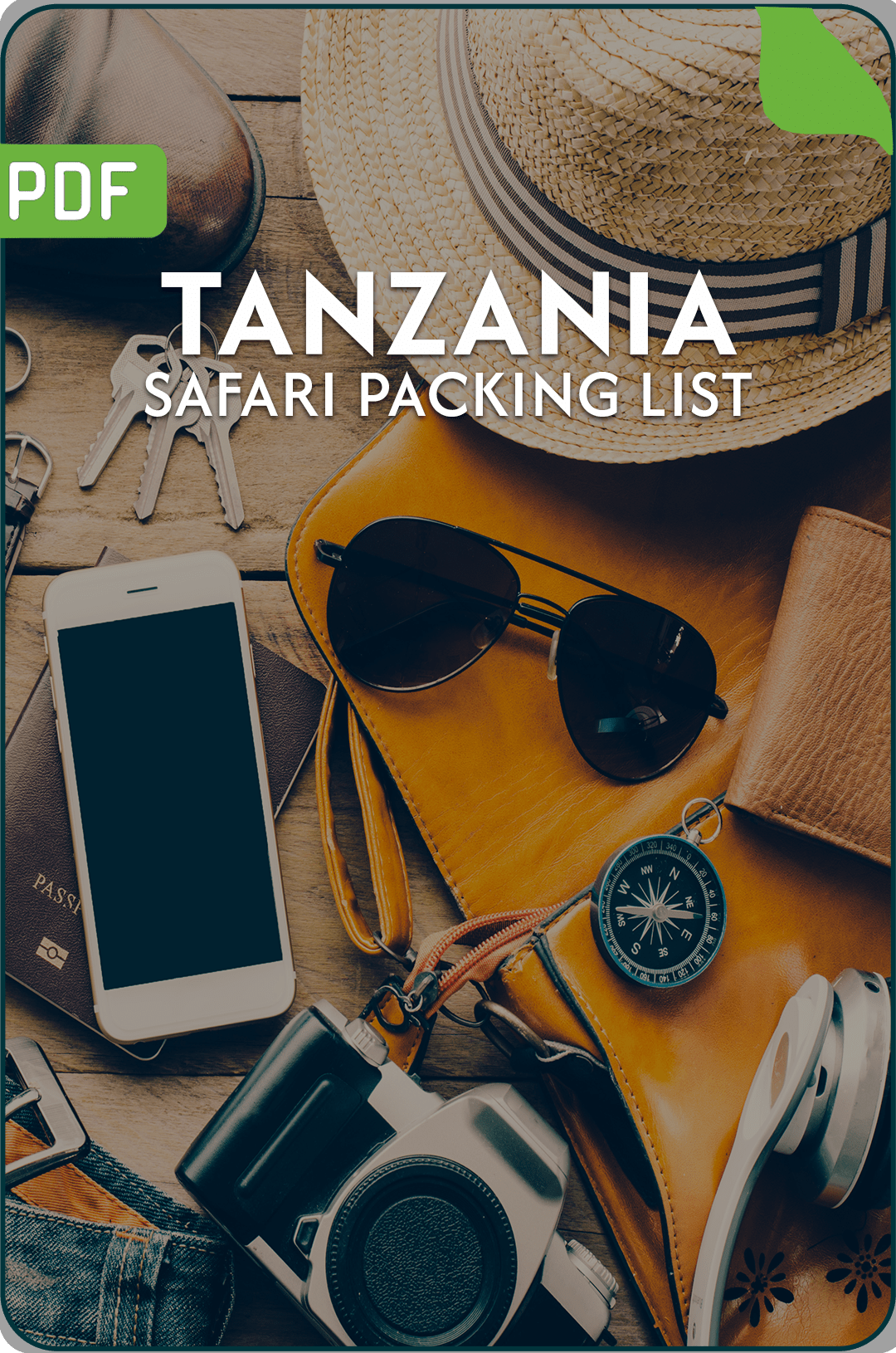
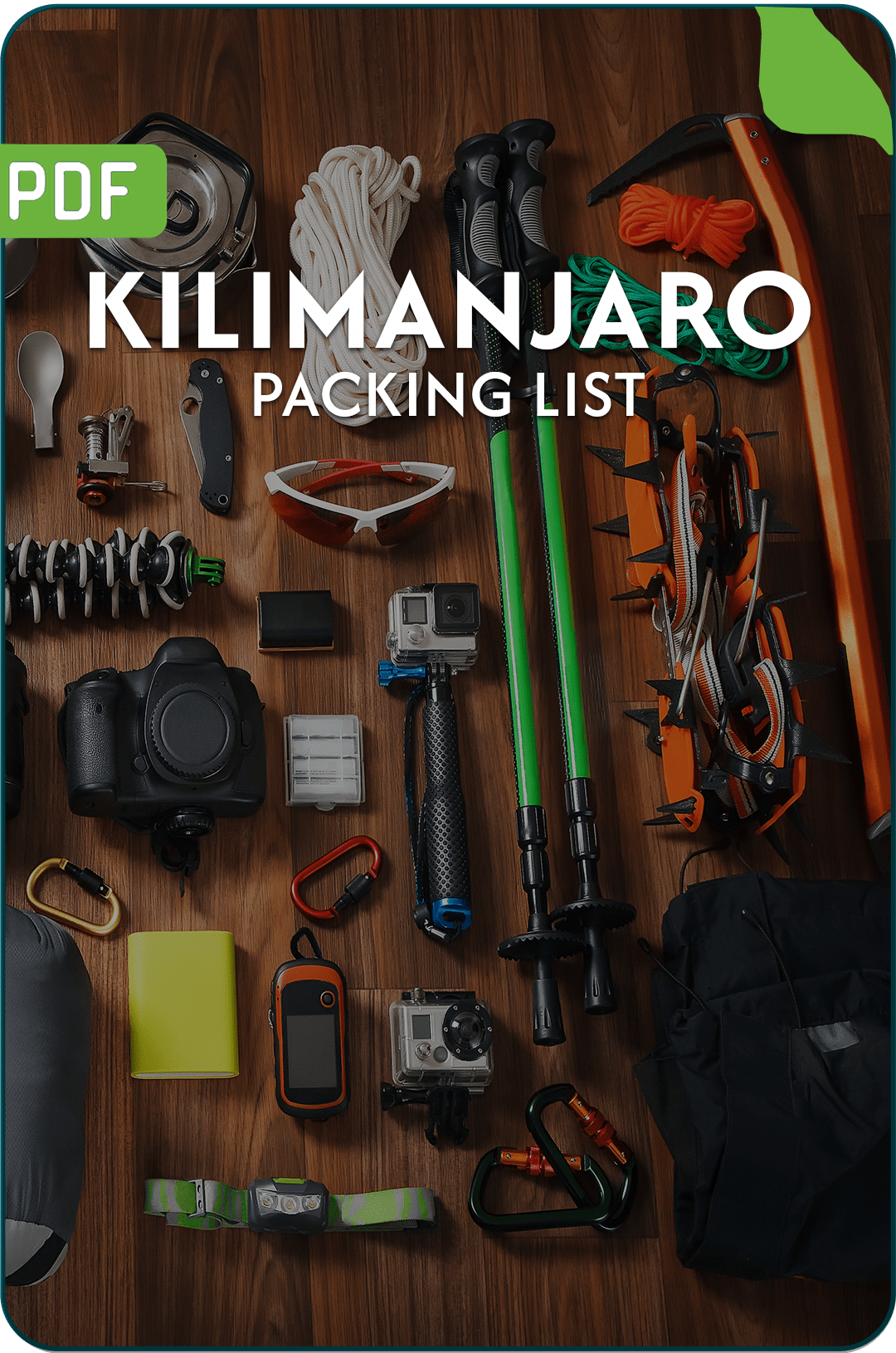
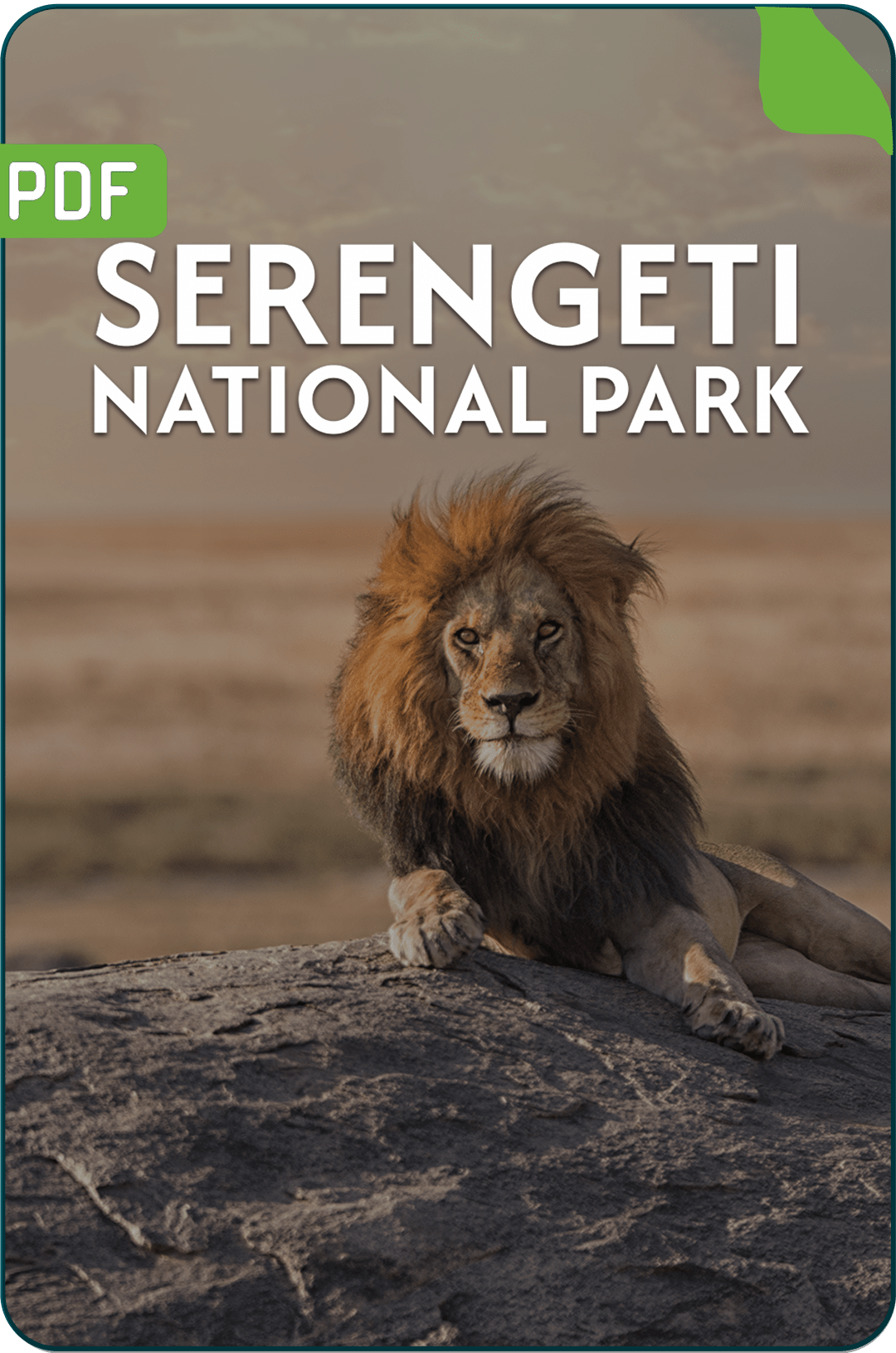
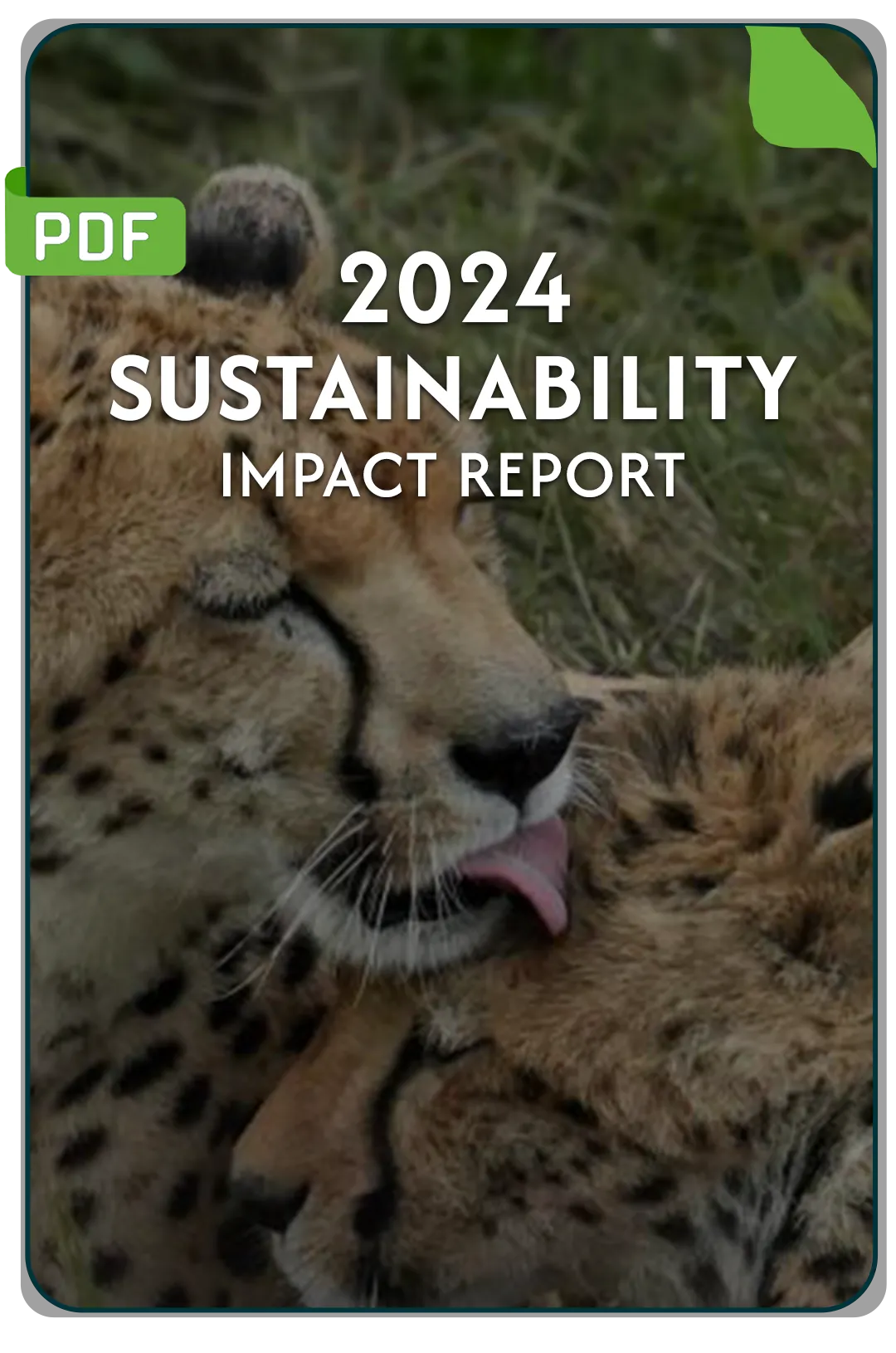
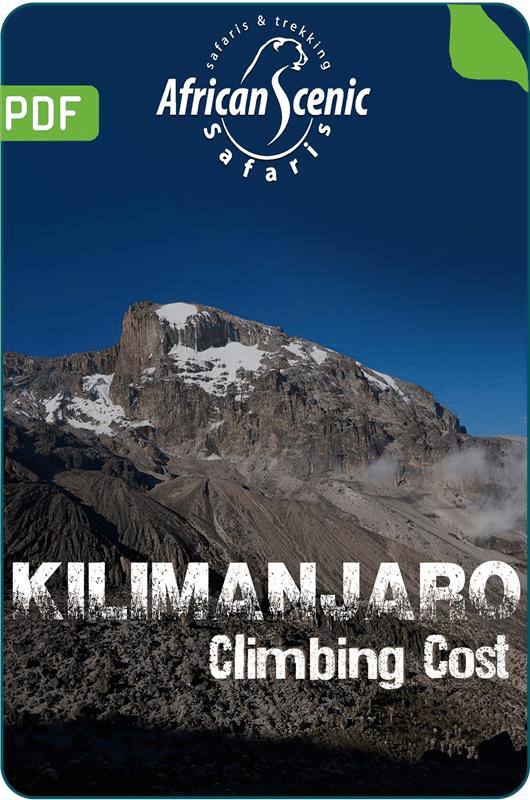





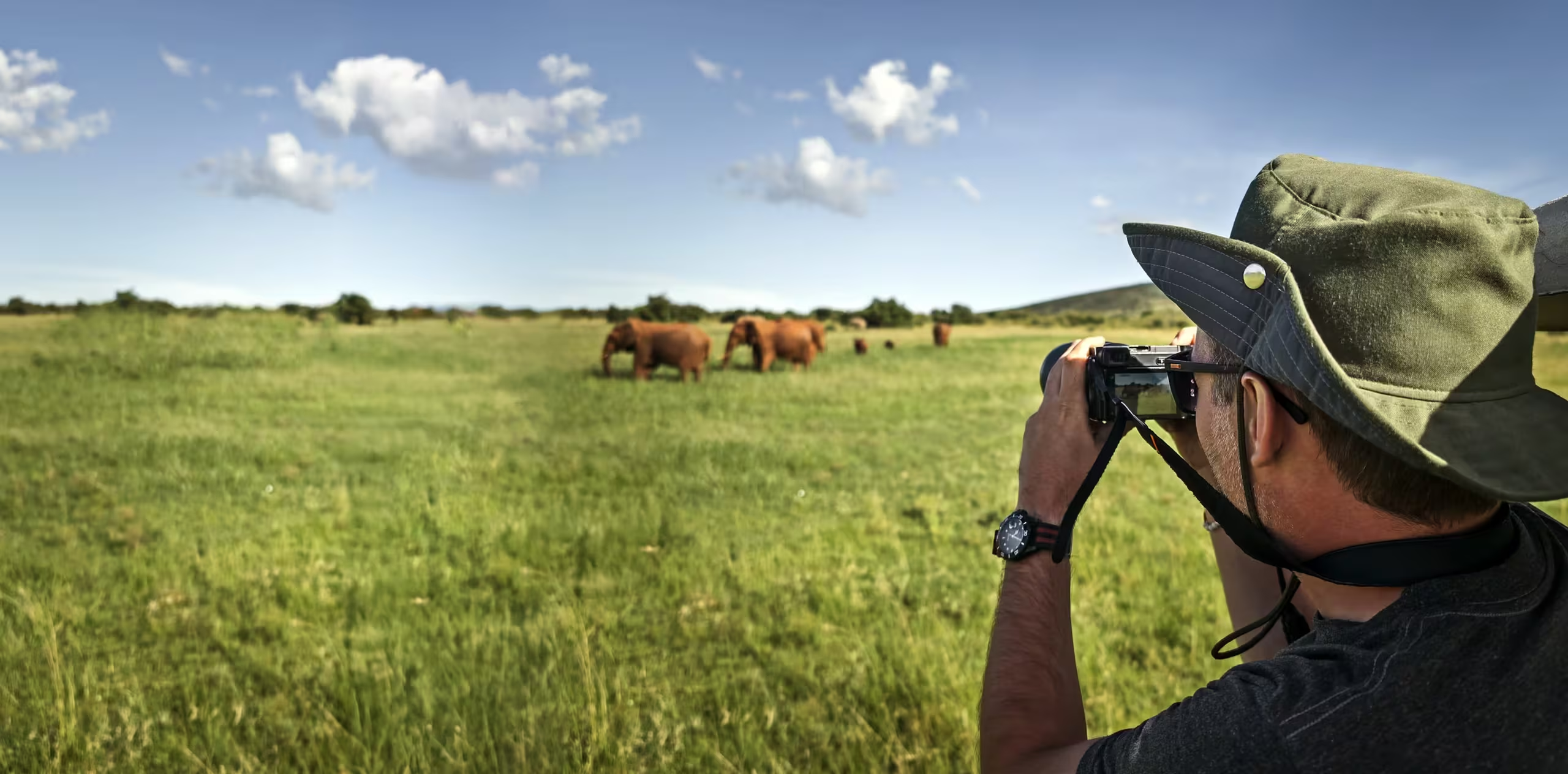
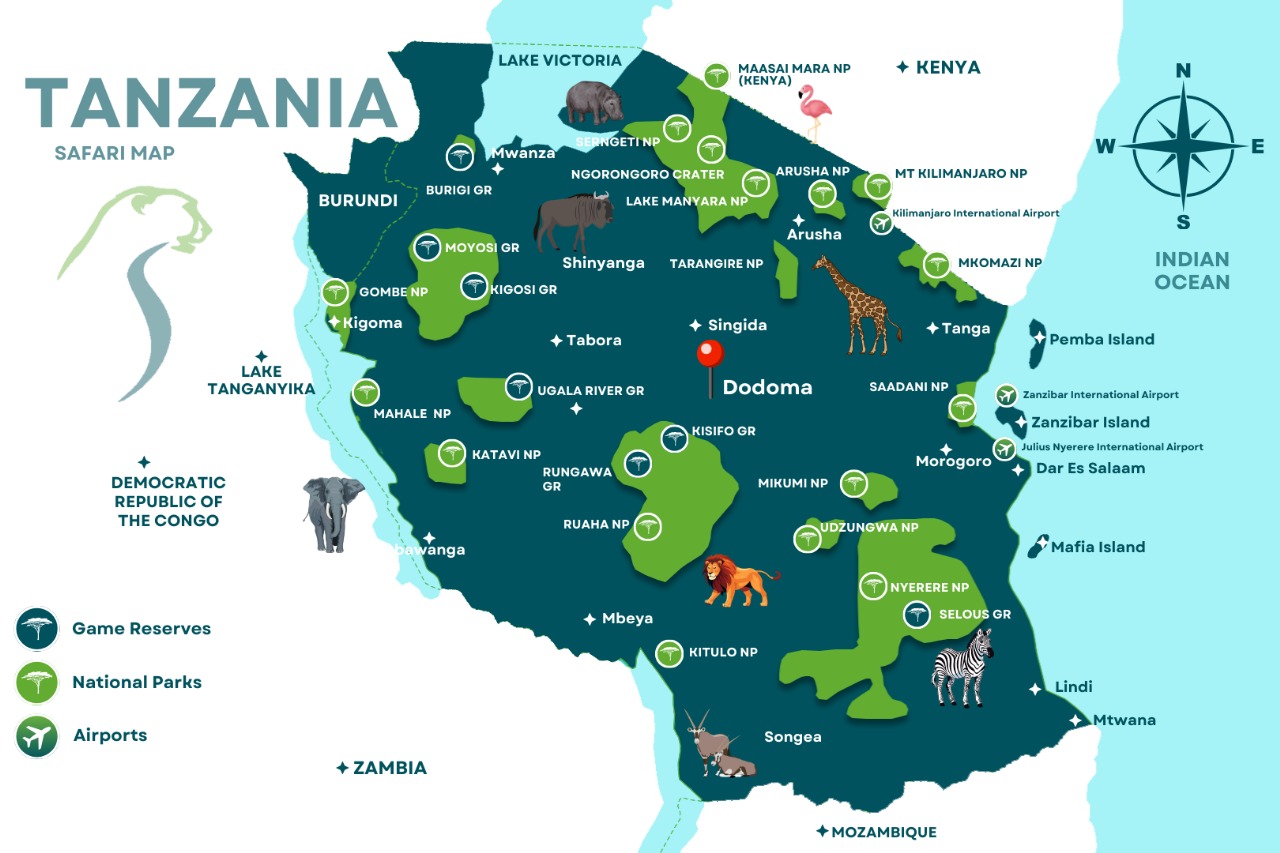
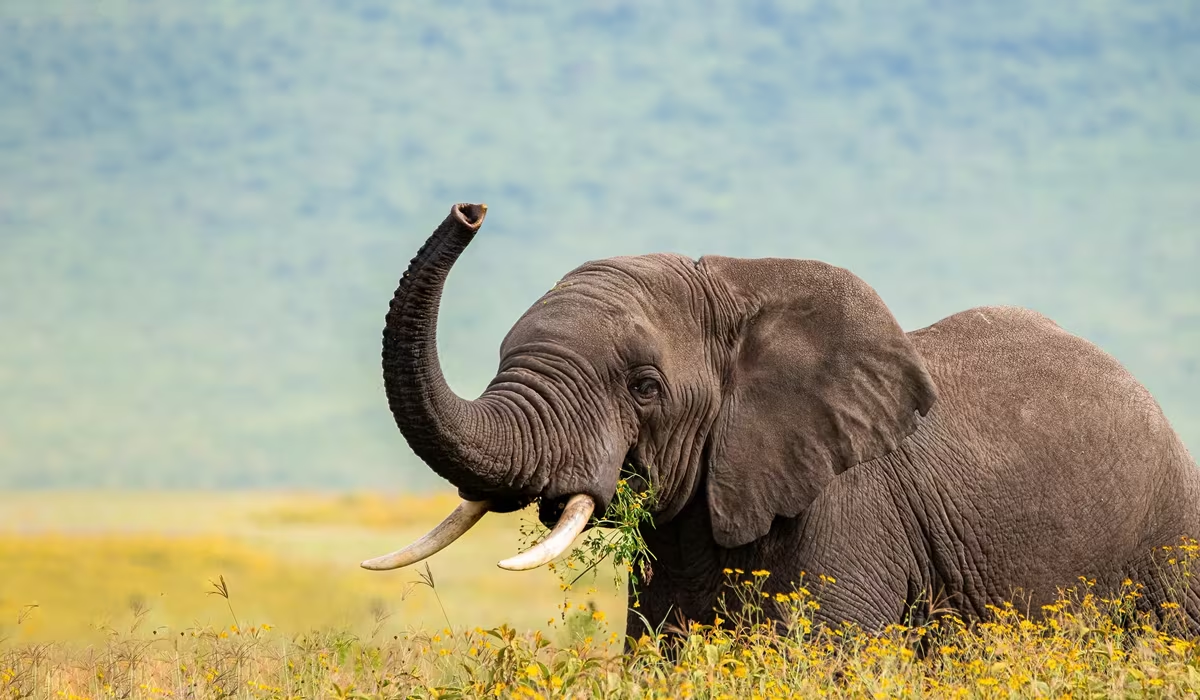















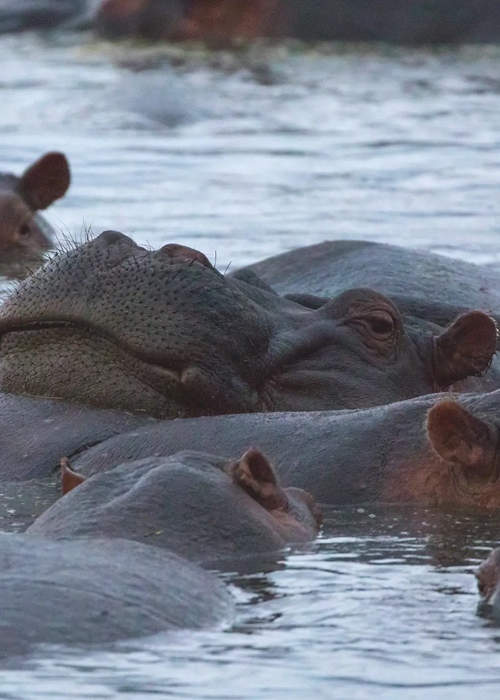

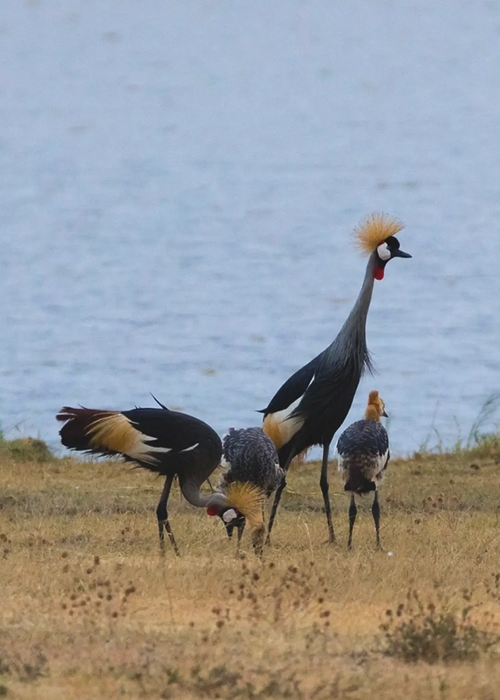



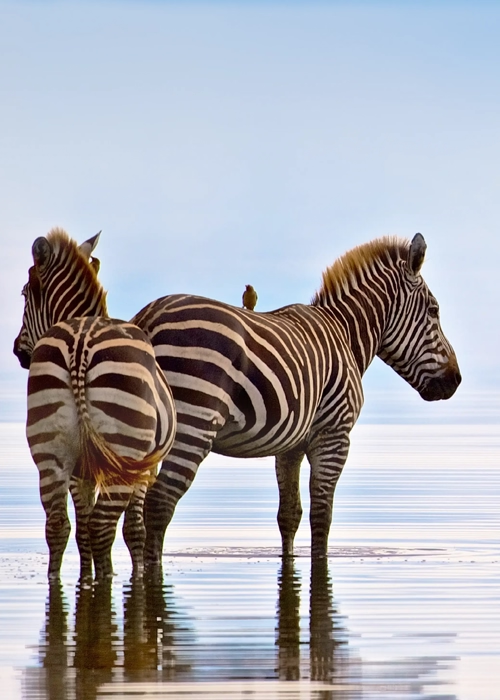



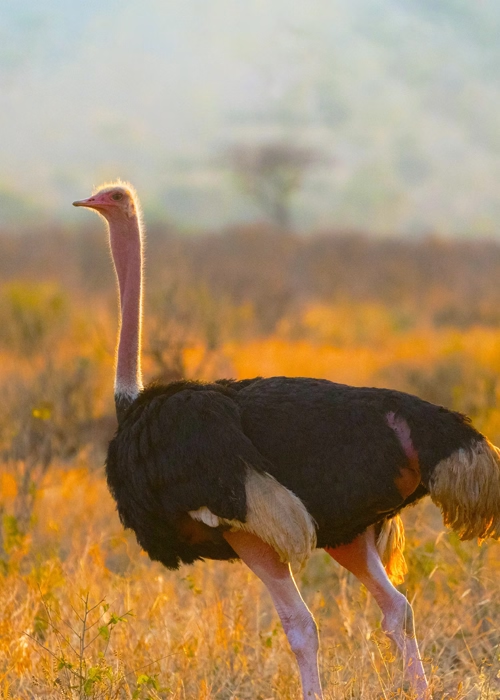
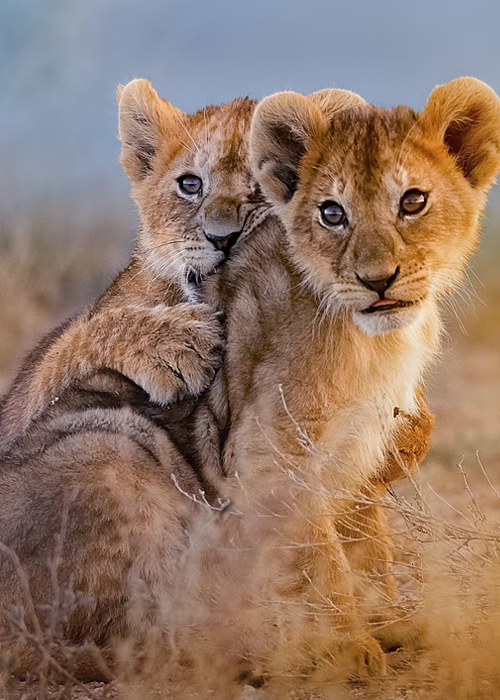
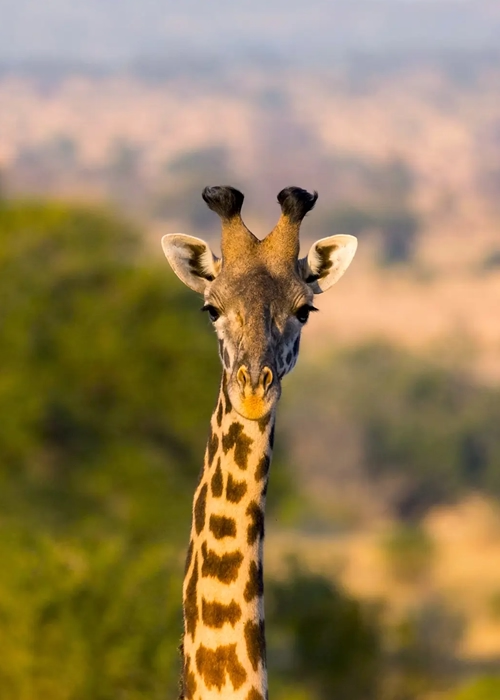

 Travel Light, Travel Right!
Travel Light, Travel Right!
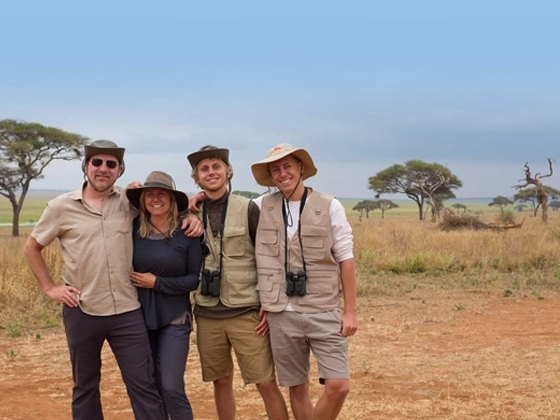


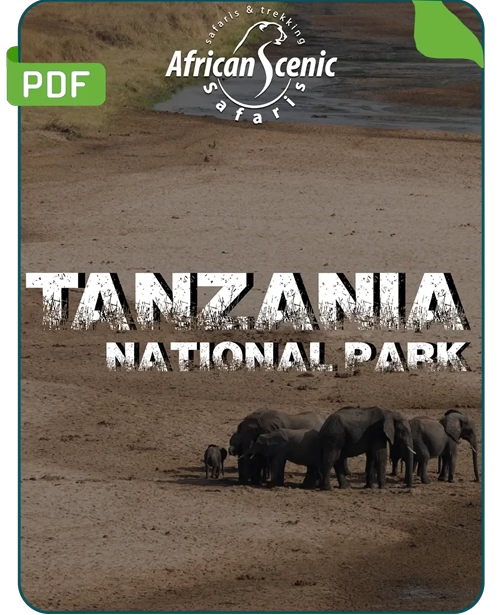


 African Scenic Safaris #1 on TripAdvisor
African Scenic Safaris #1 on TripAdvisor 




